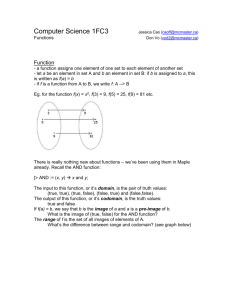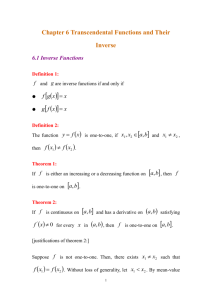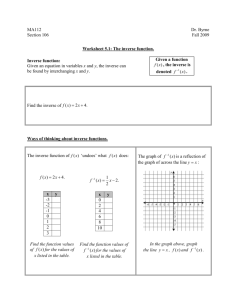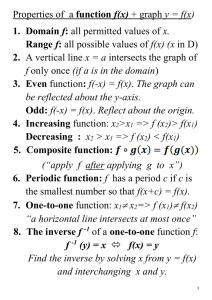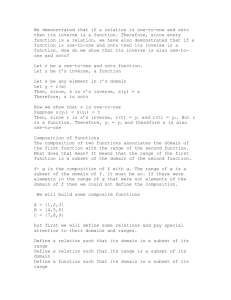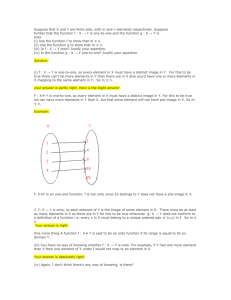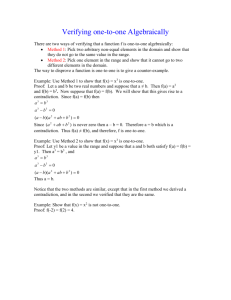Sec 3.6
advertisement
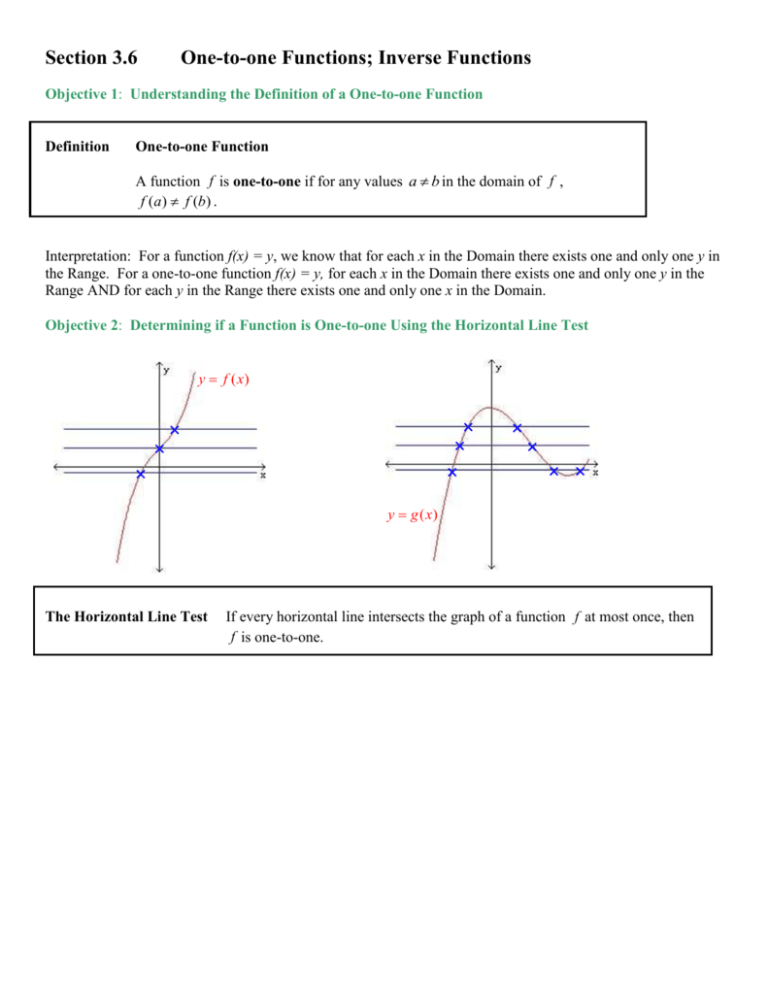
Section 3.6 One-to-one Functions; Inverse Functions Objective 1: Understanding the Definition of a One-to-one Function Definition One-to-one Function A function f is one-to-one if for any values a b in the domain of f , f (a ) f (b) . Interpretation: For a function f(x) = y, we know that for each x in the Domain there exists one and only one y in the Range. For a one-to-one function f(x) = y, for each x in the Domain there exists one and only one y in the Range AND for each y in the Range there exists one and only one x in the Domain. Objective 2: Determining if a Function is One-to-one Using the Horizontal Line Test y f ( x) y g ( x) The Horizontal Line Test If every horizontal line intersects the graph of a function f at most once, then f is one-to-one. Objective 3: Understanding and Verifying Inverse Functions Every one-to-one function has an inverse function. Definition Inverse Function Let f be a one-to-one function with domain A and range B. Then f 1 is the inverse function of f with domain B and range A. Furthermore, if f (a ) b then f 1 (b) a . Domain of f Range of f Range of f 1 Domain of f 1 f •a •b f 1 Do not confuse f 1 with 1 1 . The negative 1 in f is NOT an exponent! f ( x) Inverse functions “undo” each other. Composition Cancellation Equations f f 1 ( x) x for all x in the domain of f 1 and f 1 f ( x) x for all x in the domain of f Objective 4: Sketching the Graphs of Inverse Functions The graph of f 1 is a reflection of the graph of f about the line y x . If the functions have any points in common, they must lie along the line y x . f ( x) x3 The graph of y f 1 ( x) The graph of f ( x ) x and f a one-to-one function and its inverse. yx 1 y f ( x) yx ( x) 3 x 3 f 1 ( x) 3 x Objective 5: Finding the Inverse of a One-to-one Function We know that if a point ( x, y ) is on the graph of a one-to-one function, then the point ( y , x ) is on the graph of its inverse function. To find the inverse of a one-to-one function, replace f ( x) with y, interchange the variables x and y then solve for y. This is the function f 1 ( x) . Inverse Function Summary 1. The inverse function f 1 exists if and only if the function f is one-to-one. 2. The domain of f is the same as the range of f 1 and the range of f 3. is the same as the domain of f 1 . To verify that two one-to-one functions f and g are inverses of each other, use the composition cancellation equations to show that f g ( x) g f ( x) x . 4. The graph of f 1 is a reflection of the graph of f about the line y x . That is, for any 5. point a, b that lies on the graph of f, the point b, a must lie on the graph of f 1 . To find the inverse of a one-to-one function, replace f ( x) with y, interchange the variables x and y then solve for y. This is the function f 1 ( x) .

